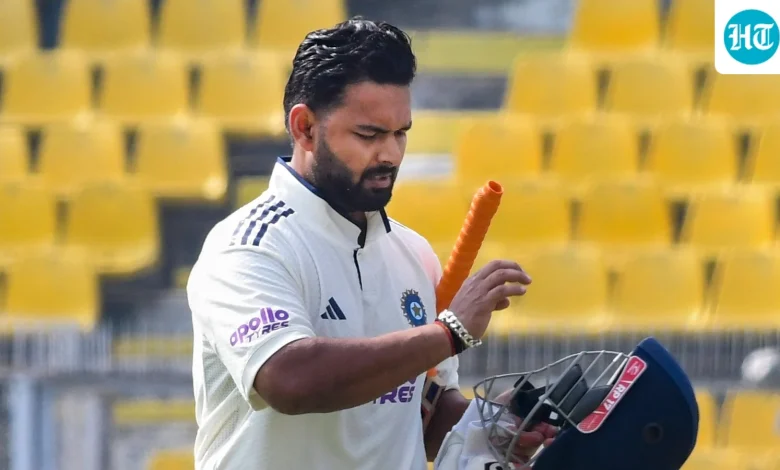India may already have lost the 2nd Test vs South Africa: Historical stats that frame the Guwahati crisis

South Africa’s 489 at the Barsapara has already bent the second Test out of shape. By lunch on Day 3, India were 174/7, still 315 runs behind, their top order undone by Marco Jansen’s bounce and Simon Harmer’s control on a pitch that has otherwise looked benign.
Rishabh Pant walks after his dismissal during day three of the second Test match between India and South Africa.(PTI)
And when you place this scoreline against India’s history after conceding 400-plus in the first innings while fielding first, the hole looks even deeper. From Adelaide 2003 to Chennai 2016, comebacks have been rare enough to be remembered by venue and year rather than as a pattern.
400-plus history
India after conceding 400 plus in the first innings of a Test match.(HT)
Since 1934, India have played 103 Tests where they have fielded first and watched the opposition go over 400 or more in the first innings. The record: 10 wins, 43 defeats, 48 draws.
The modern era doesn’t really soften the blow. From 2010 onwards, India have conceded more than 400 in the first innings while fielding first in 26 Test matches. Out of these 26 games, they have won six, lost 11, with eight draws. So even with a much stronger batting line-up and home dominance, India still lose this type of game almost twice as often as they win it.
The wins that have come in the modern era are all classics: in Colombo 2010, Mohali 2010, Bengaluru 2010, Mohali 2013, then Mumbai and Chennai in 2016. All six have a common pattern. India replied big, and the pitch wore down enough for their spinners to crust the opposition in the third or fourth innings.
At home since 2010, India’s record after conceding 400-plus in the first innings while fielding first is 12 Tests: 5 wins, 2 losses, 4 draws. That looks healthy – until you notice that almost all wins came on surfaces that broke up fast and turned square. Barsapara, so far, has behaved like the fast: a benign road that rewarded discipline and punished loose bowling.
And there is the bigger historical warning: in their overall Test journey, India have only 10 wins from 103 attempts. That’s a shade under 10%. This isn’t a situation they routinely escape from.
Reading Guwahati through that lens
In Guwahati, the script is doubly harsh. First, South Africa did not slog their way to 489; they built it through control and patience, especially via Senuran Muthusamy’s 109 and Marco Jansen’s 93. Second, India’s collapse has come on the very surface that allowed the lower order to boss them.
Right now India are nowhere near the two requirements their own history sets for a miracle:
- A monster reply that flips a 400-plus deficit into a lead of 100-150, and
- A pitch that changes character enough for the spinners to run through the opposition
Instead, they are fighting just to avoid the follow-on, likely to bat last, and facing an attack that already knows exactly how to attack them on this surface. Even if Sundar and Kuldeep drag India to 280-320, South Africa will still control the pace and trajectory of the game.
The numbers say this game is almost gone. With only 10 wins in 103 such Tests all-time, and with Guwahati looking nothing like Mumbai or Chennai 2016, South Africa are overwhelming favourites. India’s realistic best-case from here is to turn this into a long, grinding escape and steal a draw. To win, they would need something on the scale of Adelaide 2003 – and right now, they don’t even have the platform that the miracle started from.





